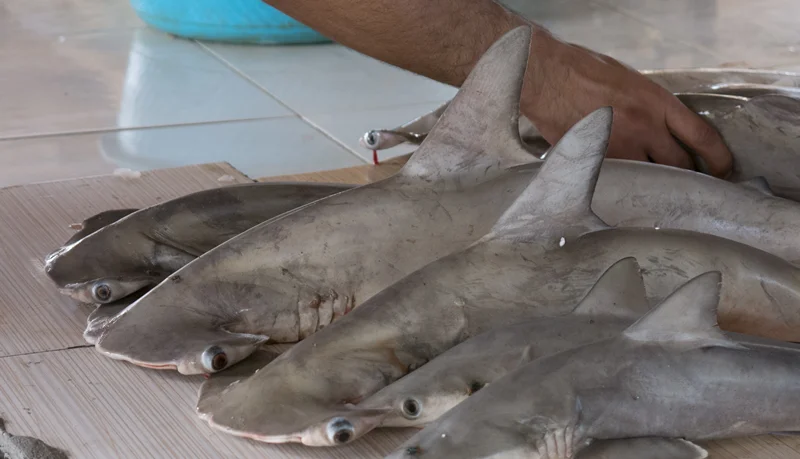These days, photos of some scalloped hammerhead and unidentified (probably pigeye or bull) sharks, were caught and processed by Iranian fishermen, are circulating in social media. These photos have sensitized the public and brought the reaction of the social media users. As a response to these photos, some officials said the photos are not from their region, and some others said the photos were not recent. But is shark and ray fishing such a rare phenomenon along Iranian waters that officials could easily deny it? Have the necessary measures been taken to protect these amazing but threatened fish in Iran? If so, to what extent these measures have been effective? Should we blame the fishing communities? Should we pose more bans? If not, what would be the solutions?
In an interview with Iranian Students News Agency (ISNA), Mohsen Rezaie-Atagholipour, the QECI’s lead Scientist, tried to answer these questions based on the official statistics and scientific findings. The original interview is in Persian (click HERE), but the highlights include:
- Unsustainable Fishing of chondrichthyans (sharks, rays and chimaera) is not a problem specific to Iran, but is a global problem.
- Northwestern Indian Ocean hosts about 180 species of 15% of all known chondrichthyan species, about 180 species, of which half of them are classified as threatened species in the IUCN Red List. Nonetheless, this region consists of some of the world’s top chondrichthyan fishing and trading nations.
- Due to official statistics reported by Iran gov to the UN Food and Agriculture Organization (FAO), Iran caught more than 18000 tonnes of chondrichthyans for about one decade, whereas this statistic does not include all taxa, and Illegal, Unreported and Unregulated (IUU) Fisheries. But even based on these rough statistics, Iran has been classified among 26 countries that together are responsible for more than 80% annual global catch.
- There is no doubt that unsustainable fisheries are a big threat for endangered marine wildlife species, including chondrichthyans, and yes, the ideal situation is that fishing activities become limited as much as possible. But we should note that the livelihood of thousands of local people living along southern Iranian coastline completely depend on fisheries. Therefore, if we want to limit fishing activities, we should simultaneously develop alternative livelihood options for fishers. If not, IUU fisheries will replace legal fisheries, which means we would replace one problem with another.
- Introducing bans doesn't seem like a real solution for chondrichthyan fisheries in southern Iran. Let’s have an example to illustrate how it might work: Due to the Iranian law of fishing and hunting, the fine of caching each shark is 300.000.000 IRR. Based on FAO official statistics, Iran caught 18000 tonnes of sharks between 1997 to 2013. This statistic does not include all shark taxa, nor IUU fisheries. But let’s assume it shows all caught sharks in these six years. Also let’s have another improbable assumption, that the mean weight of each caught shark was 100 kg (in reality, we know that most of them did not attain this weight). It means more than 1.800.000 sharks were caught in these years. Just multiply this number by 300.000.000 IRR. The Result? 5.4 * 1014 IRR. Obviously, the government has never such amount of money from the fishing communities, and that sharks are now sold in every corner of coastal towns/villages.
- Shark and ray fisheries in southern Iran have a strong historical background. Therefore, if we would protect our sharks and rays in this area, we require more reliable community-based and science-based conservation practices, which include cooperation with local communities, public awareness building, gear-modification, and many other measures that have been successfully applied elsewhere around the world.
- Finally, we should to know that the Persian Gulf without its biodiversity will have nothing to be proud of. As Zagros Mountains’ foothills without Persian Lions, and Hyrcanian forests without Caspian tigers, have something missing, the Persian Gulf without its apex predators, sharks and rays, it would be imperfect.? or it could result in severe marine, ecological imbalances., counter to the interests of sustainable fisheries.



Comment